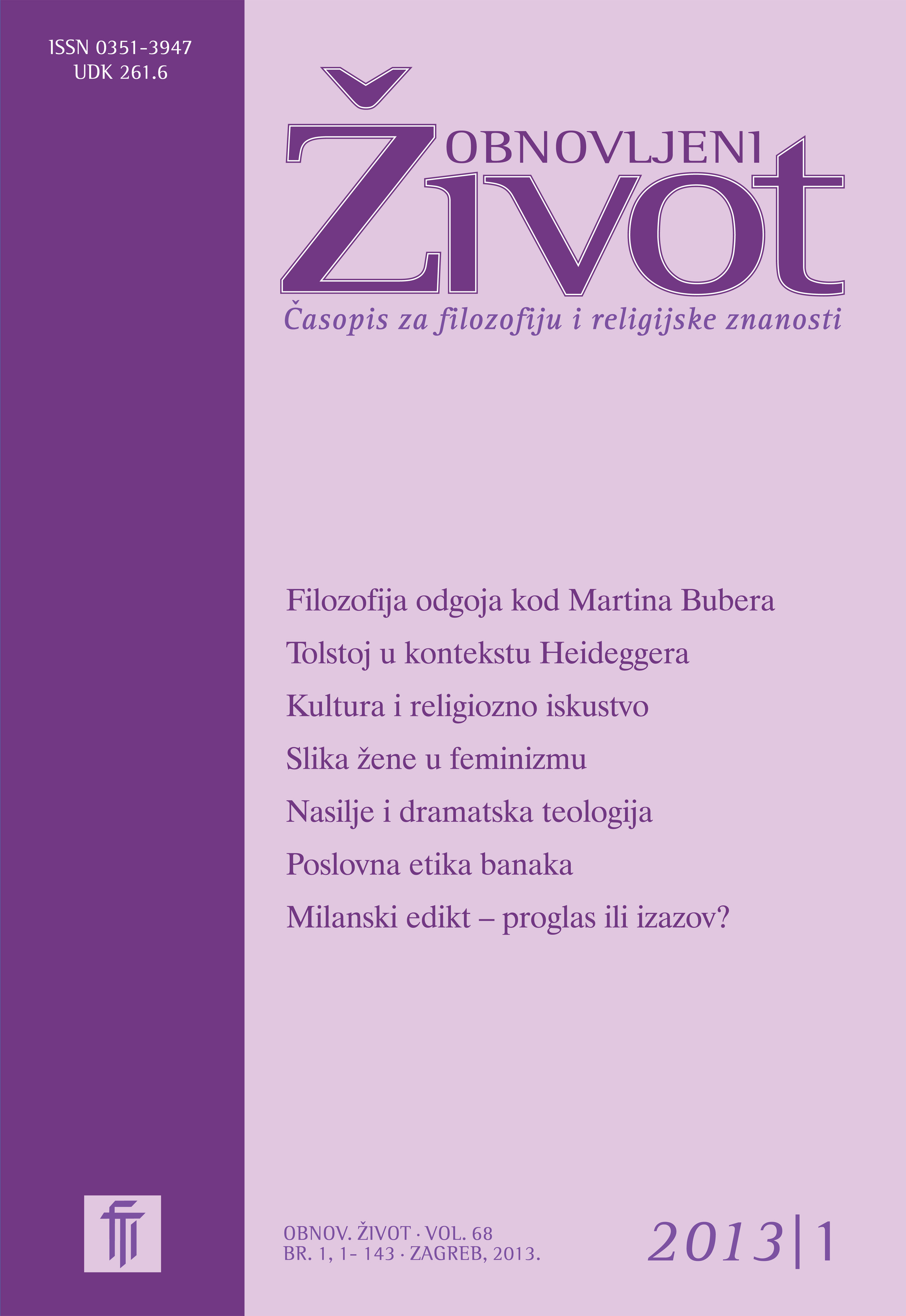The Image of Women in the »Old Feminism« and in the New Feminism of John Paul II and Benedict XIV
Keywords:
old feminism, new feminism, post–feminism, postmodernism, gender, gender/sexuality, nature/culture, genius of women, image of womenAbstract
In the article the author deals with the phenomenon of feminism and the image of women portrayed by feminism through its historical phases. In the first section, starting from the history of feminism and its various phases, the author traces the changes in the image of women in each individual phase. The author makes a special reference to the problem of interpretation of nature and culture, gender and sexuality in the second and third waves of feminism in which, under the influence of postmodernism and the gender theory, there came about a deconstruction of the natural image of women. Namely, while on the one hand postmodern feminism (post–feminism) questions the existence of the category »woman« as such, emphasizing that »woman« does not exist (ut sic), but rather only a category of women (white, black, lesbian, heterosexual, etc.), on the other hand the gender theory considers the category »woman« a product of culture. In the second section of the essay the author explains the natural image of women according to the more recent Catholic bibilical–theological anthropology of John Paul II and Benedict XVI. Taking into account the image of women from the aspect of »the old feminism«, and the influence of the gender theory on the natural image of women, the author sees in the new feminism a possible means not only of preserving the natural image of women, but also the possibilty of creating a different culture, a culture in which women would not be discriminated.
Downloads
Published
Issue
Section
License
Jednom prihvaćeni članak obvezuje autora da ga ne smije objaviti drugdje bez dozvole uredništva, a i tada samo uz bilješku da je objavljen prvi put u Obnovljenom životu. Uredništvo će obavijestiti autora o prihvaćanju ili neprihvaćanju članka za objavljivanje.
Članci objavljeni u časopisu se, uz prikladno navođenje izvora, smiju besplatno koristiti u obrazovne i druge nekomercijalne svrhe.


